Scientific
New Member
I conclude that both ways work.
Yeah, I think nature has had that worked out for quite a while now.

How To Use Progressive Web App aka PWA On 420 Magazine Forum
Note: This feature may not be available in some browsers.
I conclude that both ways work.

Yeah, I think nature has had that worked out for quite a while now.
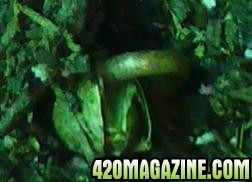
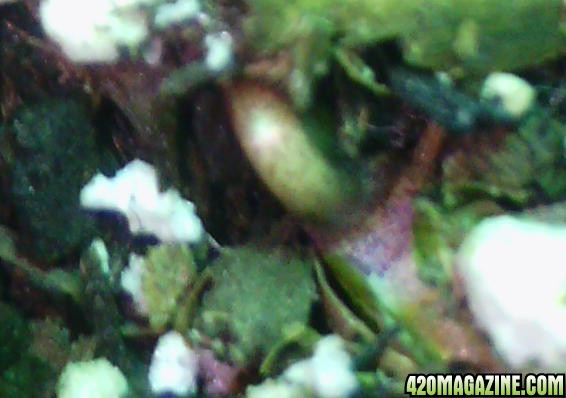
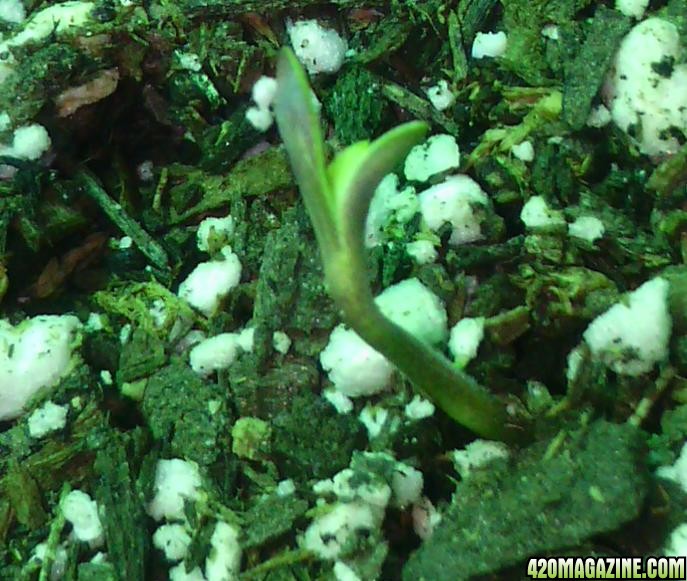
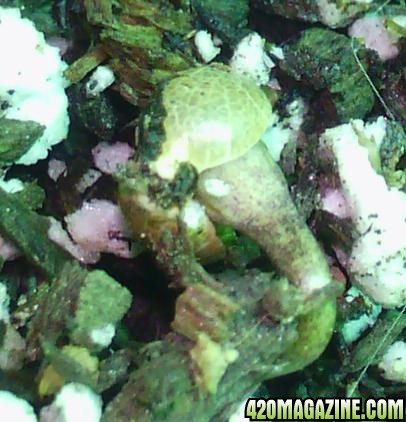
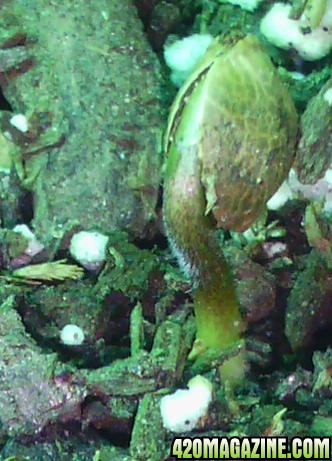
When the tap root emerges from the seed straight downward, then when it pushes the seed hull up through the dirt, it's only pushing it in a fashion that makes it push down onto the rest of the plant. If it's upside down, the root goes up, then down, and as the seedling grows, it pulls the seed up out of the dirt in such a way that makes it more likely the seed hull will come off as it rises. Check out these pics to get a better idea of what i mean...



Versus


Think about the shape of the seed as well. The bottom has much more mass. It's self-righting. When the seeds are in the ground, and water comes and looses it up, they "heave" and become lifted and shift their position. They are more likely to re-seat themselves with their "base" downward, and the point of the shell where the root emerges upward. This "heaving" action is also what helps scarify seed shells to help them imbibe more water too.
In my opinion it doesn't really matter either way, but there is a clear advantage to planting them in such a fashion that they will "pull" their seed hull up through the dirt, giving a greater chance the cotyledons will emerge from the dirt without the seed hull still attached. That's not a huge problem though, as 9 times out of 10, the new growth of the true leaves and spreading of the cotyledon will take the seed hulls off. But the problem is it may require more energy to do this than a seedling has, so that's why sometimes you'll have seedlings that need some extra assistance in removing the seed hull.

I planted all mine root down this time and they all horseshoed around and ended up like are supposed to. Just remember pointy end down cause the seed is on the other end which in turn is where your leaves sprout. Poochapyropick 420. Rollme1The last time I relied on gravitropism to get the root growing down, the root shot directly up and out of my Rapid Rooter! I had to flip it over. So much for gravitropism. I'd planted pointy end up, like the Britannica article suggests.
I now plant them on their sides and hope the seed knows what it's doing!
The last time I relied on gravitropism to get the root growing down, the root shot directly up and out of my Rapid Rooter! I had to flip it over. So much for gravitropism. I'd planted pointy end up, like the Britannica article suggests.
I now plant them on their sides and hope the seed knows what it's doing!
Hey TS, the Rapid Rooter has a hole that's about 1/4 inch deep and I loosely covered the hole with a small piece of RR. Perhaps you're right tho and I'll try again.Perhaps it wasn't planted deep enough? U-turns aren't donuts, lol - they require a bit of space ahead of where you begin the operation.
The graphic is interesting and gives much food for thought. With the root upward, pulling itself up may help it to shuck it's shell but I actually think that function is mostly done by the cotyledons as they fill out.Im just so new to growing marijuana that I dont want to mess things up more so I want to be successful. The way I have been operating is I do a ton of research then follow the way I feel most of the successful growers are doing things, like I said consensus.
Sorry If I seemed contentious last night. I was just trying to be helpful, and was just regurgitating what I felt was the consensus on growing in coco(it is a very forgiving medium). I am trying to approach growing with a level of humility that comes unnaturally to me and I truly do appreciate everything that I am learning.
The graphic is interesting and gives much food for thought. With the root upward, pulling itself up may help it to shuck it's shell but I actually think that function is mostly done by the cotyledons as they fill out.Im just so new to growing marijuana that I dont want to mess things up more so I want to be successful. The way I have been operating is I do a ton of research then follow the way I feel most of the successful growers are doing things, like I said consensus.
Sorry If I seemed contentious last night. I was just trying to be helpful, and was just regurgitating what I felt was the consensus on growing in coco(it is a very forgiving medium). I am trying to approach growing with a level of humility that comes unnaturally to me and I truly do appreciate everything that I am learning.
I'm still confused. So when the seed germinates and it's time to go in the soil, does the seed casing go in the soil first with the little root facing up or the opposite? I put my seed into the dirt with the white root part peeking up from the dirt lastnight and it doesn't look so well today. Afraid I did it backwards.I try very hard to plant the tap root down. A couple of weeks ago I planted some UltraDawg seeds and one came up within 2 days. The second one broke the surface a few days later but looked as if the top had broken off under the surface. I never really understood it as it looked albino but it looked greenish at the soil surface.
I took some pictures of it recently and looked at it magnified and saw what looked like crystals on either side of the stump. At some point I realized the stump was the root which was trying to grow more roots above soil.
Anyway, this morning I dug it up and of course found that the leaves were under the soil. Eventually it probably would have straightened itself out but I turned it over and tried to cover the root and to allow the plant to grow upright.
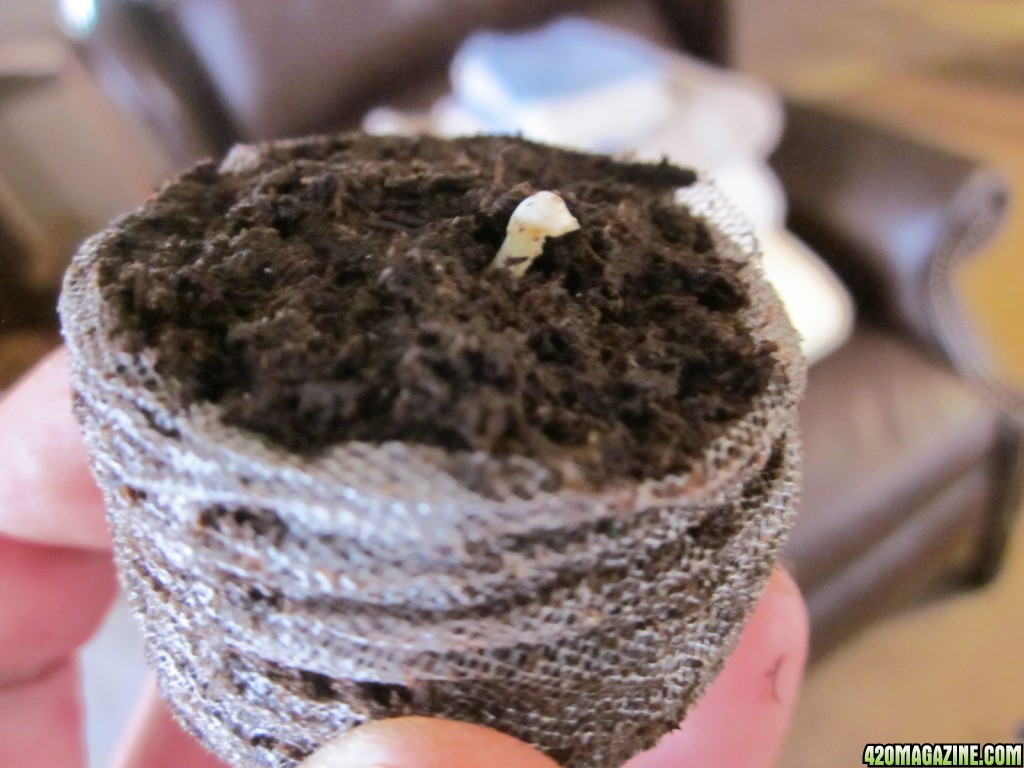
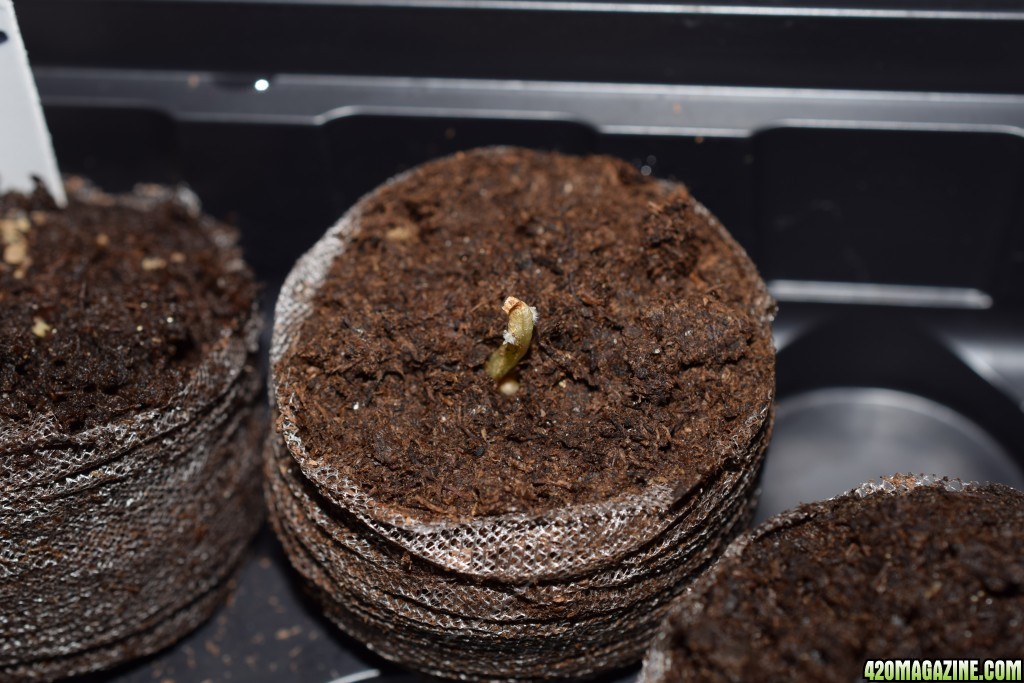
See those two clusters of tissue. I think those are micro roots.
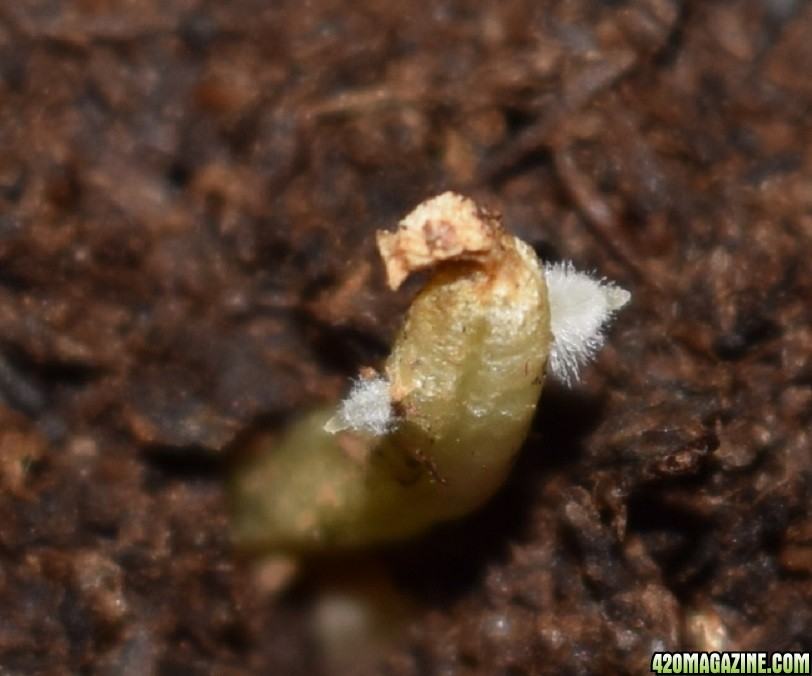
Now if I didn't break anything flipping it over this morning and if the root is in contact with the peat pellet I'll have my second UD tomorrow. If not, it will just be a learning experience.

The tap root can be pointed up or down or left to chance. The thing that is really important is that the root is under the surface of the soil and not sticking up which is what is sounds like you did.I'm still confused. So when the seed germinates and it's time to go in the soil, does the seed casing go in the soil first with the little root facing up or the opposite? I put my seed into the dirt with the white root part peeking up from the dirt lastnight and it doesn't look so well today. Afraid I did it backwards.
I figure that just about every one of the over 150,000 plant species will reorient themselves in the first several days after the seeds are finishing their germination steps. Watch seeds like squash or beans go through this same stage like we see with our Cannabis seeds. This moving of the seed so that the tap root goes down and the two cotyledons point to the sky is not unique to just dicots(two cotyledons) either.Pointy tip of seed should always point upwards if planted in a set medium. The tap root always does a 180 degree turn Downwards after first sproutof the Tap Root, it's pre programed in the genetic make up of the species to do that.
What a jackassNot to be rude...but is this just a way to troll us all? The question in itself is funny, why on earth would you plant it up or sideways unless you're looking to make germination difficult? I'm guessing the same can be said for just about anything that grows in soil. I hope this isn't for real
I wouldn’t worry about it, that person hasn’t been seen in almost 5 years.What a jackass